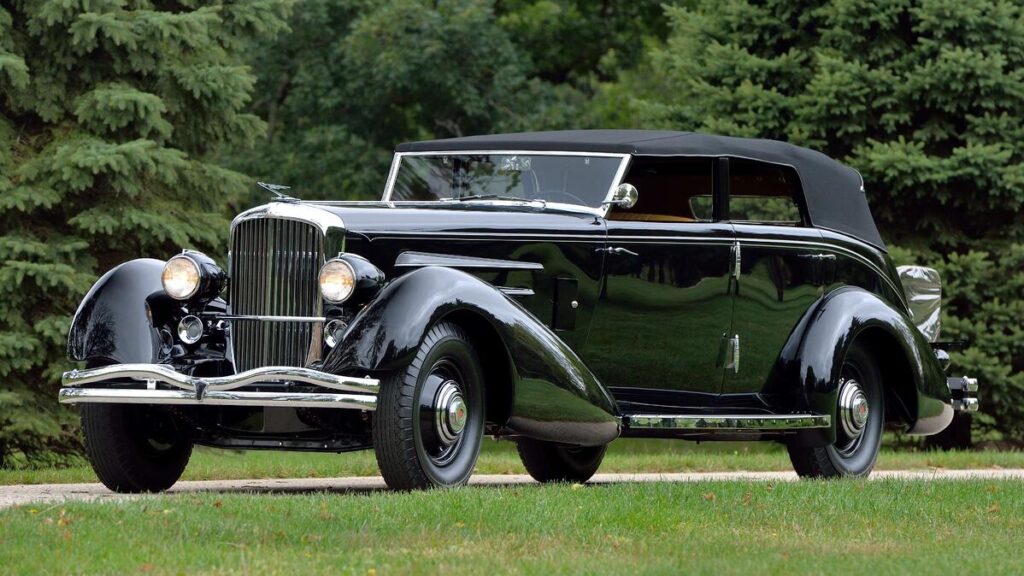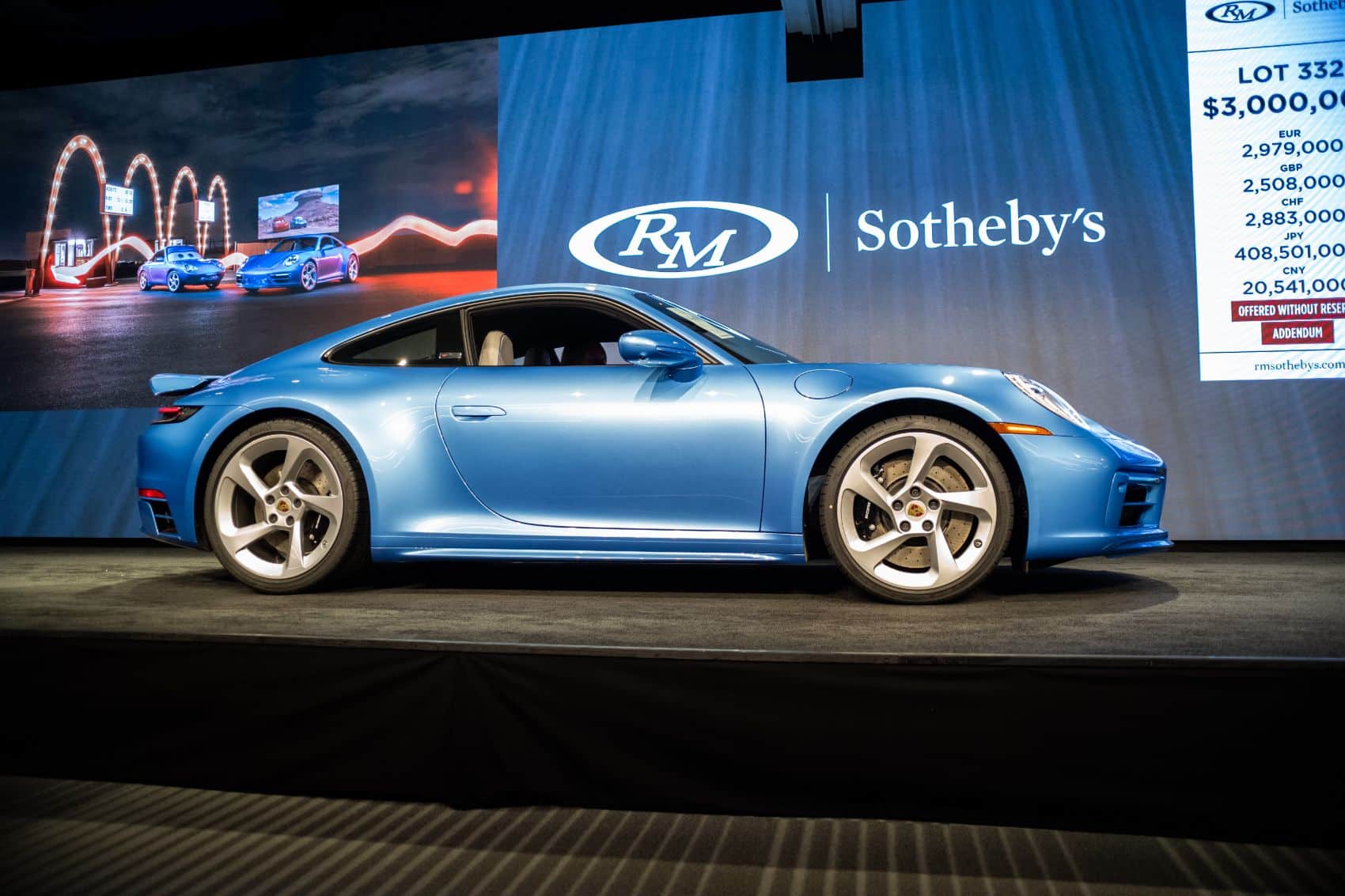With so many threats to economic stability at present, including skyrocketing new and used car values, recession worries, and global warfare jitters, you would think that purchases of hobbyist automobiles might be put on the back burner. However, the combined results from the 2022 Monterey Car Week would have you believe the good times are never-ending; hence why Monterey Car Week makes for an excellent, high-level example of how car auctions work.
Let The Good Times (and Big Checks) Roll
Five auction companies, Bonhams, Broad Arrow, Gooding, Mecum, and RM Sotheby’s, combined to sell a staggering $479 million in special-interest cars, trucks, motorcycles, and automobilia in 2022. Of those five, RM Sotheby’s was at the top of the heap, with a sales total of almost $240 million, which bested the other four auction companies’ totals combined. RM also sold the highest-priced vehicle of the week, a 1955 Ferrari, for $22 million.
This was Broad Arrow’s inaugural Monterey event, and their sales totaled $55.2 million; Bonhams brought in over $28 million; Gooding reached $109.5 million, and Mecum raked in $46.7 million. Sell-through rates were equally impressive. RM hit an incredible 95 percent; Bonhams, Broad Arrow, and Gooding had sell-throughs in the 80 percent range; Mecum’s sell-through was reported to be around 65 percent.
How Car Auctions Work
While it’s fun to watch from the sidelines as the big and not-so-big spenders alike use some discretionary income to buy automotive toys, it can also be instructive to take a closer look at how these numbers come together. What makes for a successful auction sale? If Auction House A grosses twice as much in sales as Auction House B, does that mean A did twice as good a job? And what exactly is “sell-through,” and why does it matter?
The sales results for any auction company primarily depend on two factors: the number of vehicles offered and the potential value of those vehicles. Let’s compare two theoretical examples. A car auction at a police impound lot might move 100 cars with an average value of $1,000 each, resulting in $100,000 in sales. On the other hand, a small boutique auction featuring 10 high-end sports cars might see all 10 sell for an average price of $200,000 each, netting two million. The second auction sold 1/10 as many cars yet grossed 20 times as much.
These two hypothetical examples presume that all the cars at the auction are sold. A third factor often overlooked in auction analyses is the percentage of vehicles sold, which is the sell-through rate. Some cars do not sell because they have what’s known as a “reserve price.” A vehicle owner may decide that their car is worth $100,000, and the owner sets this as the reserve price. If the bidding tops out at $90,000, the reserve has not been met, and the owner will not allow it to sell. It is important to note that the bidding audience never knows the reserve price ahead of time.

The All-Powerful Reserve Prices
Some auction companies allow owners to set their own reserves. The issue is that an owner may have an inflated and unrealistic notion of their car’s value. If most 1982 Chevy Corvettes sell in the $20,000 range, and an owner of a similar car thinks theirs is worth $40,000 and sets that as the reserve, it is likely the bidding audience will not agree, and the $40,000 car won’t meet its reserve. Other auction companies work aggressively with consigners (as the vehicle owners are known) to establish reasonable reserves that align with current market trends. I’ve heard stories of auction companies refusing consignments because of an inability to reach a consensus regarding the reserve.
RM Sotheby’s Monterey auction was extremely successful for many reasons, but certainly, one of them was the setting of reserve prices that were met by the bidders. Contrast that with Mecum, where it’s possible that consigners have more of a say in setting reserves. Their sell-through rate, or percentage of cars sold, was still respectable at around 65 percent but pales in comparison to the Monterey competition.
Occasionally one sees auction cars listed as “selling at no reserve,” which is always announced to the audience. This means the consigner is willing to accept the highest bid as the final sale price. This sounds risky, but often can be to the seller’s advantage. Some sellers just need to “thin the herd,” no matter the financial result. Some bidders, knowing that the car will sell, may try to get a deal, hoping the car flies under the radar. If more than one person in the room wants the car, though, a bidding war could break out, and a No Reserve car could sell for more than what might have been its reserve price.
From my auction observations through the years, a combination of quality consignments, reasonable reserves, and the right bidders in the room yields the best results.
Something For Everyone
While auction companies like to brag about their total sales amounts, again, this is strictly a function of both quantity and quality, as cited in my theoretical examples above. Let’s look at the number of one million+ sold units from Monterey in 2022. Broad Arrow had 13; Bonhams sold 9; Gooding moved 28; Mecum had 12, and RM Sotheby’s sold a staggering 52 cars above a million dollars. Given those lopsided numbers, you understand how RM Sotheby’s final dollar total rose to the level it did.
The total number of lots was relatively low for the four auction companies other than Mecum. They ranged from 93 for Broad Arrow to around 180 for RM Sotheby’s. Mecum, by contrast, had close to 450 lots and sold close to 300. Counting the number of vehicles that sold under $100,000, Mecum was the clear “winner” at 116 (about 38 percent of lots offered). Broad Arrow, by contrast, had 12 lots sell under $100,000, representing only 13 percent of their offerings. Mecum has long been known as a place where the average collector is more likely to find a reasonably-priced vehicle. It’s worth keeping that in mind when comparing Mecum’s results with the other auction houses which have traditionally appealed to the more well-heeled buyers.
As we wait to see what 2023 brings in Monterey, one thing is for sure: the collector car hobby continues to be healthy!
Richard Reina is the Product Training Director for CARiD.com, a digital retailer of aftermarket automotive parts and accessories and Automoblog’s resident expert on the collector car market. He enjoys restoring and driving old cars with a special love for anything Italian. Richard is the author of The Collector Car Hobby, a guidebook for finding and enjoying the classic car of your dreams.
Editor’s Note: The auction result figures included in this article were compiled from various sources, including auction company websites and media outlets. They may not reflect rounding, post-auction sales, or other updates made after this article was written.


